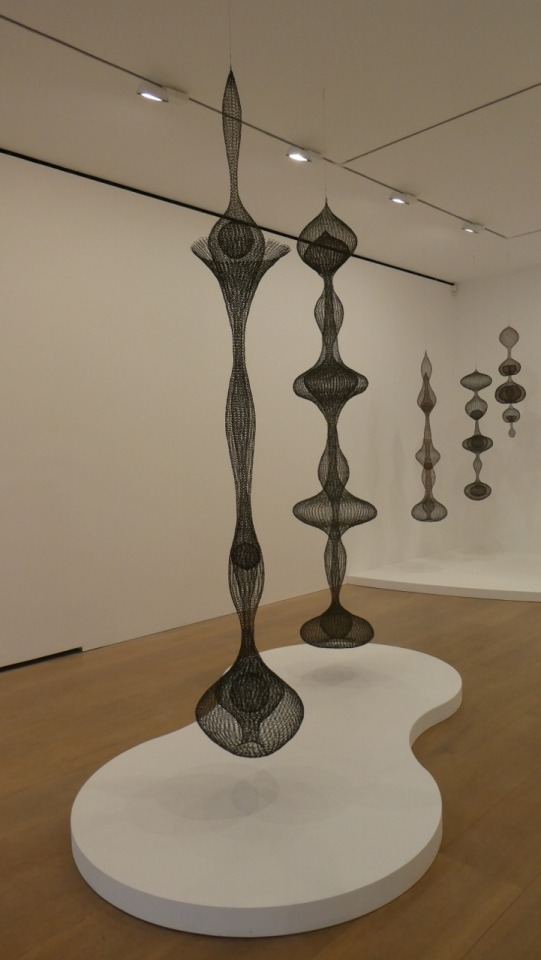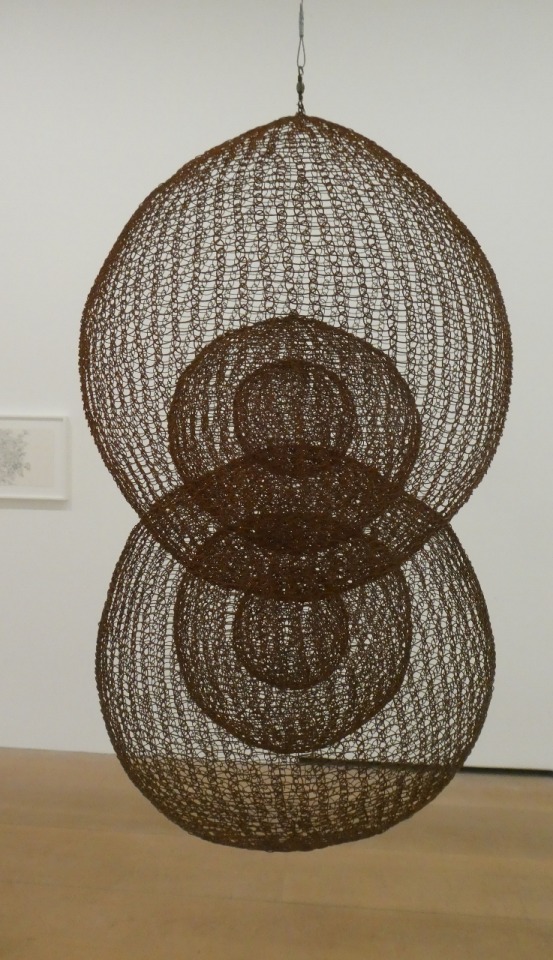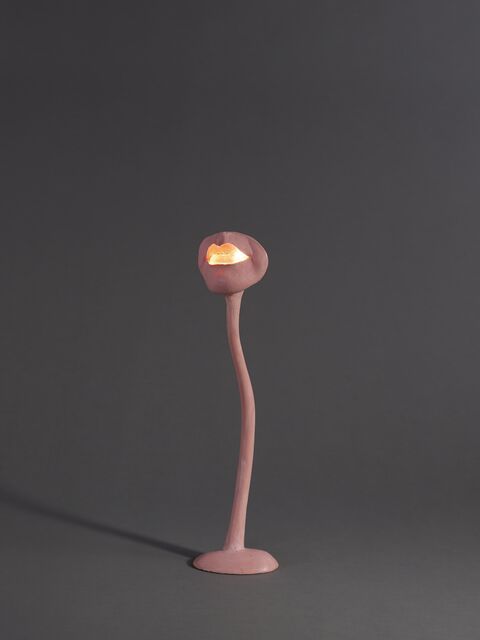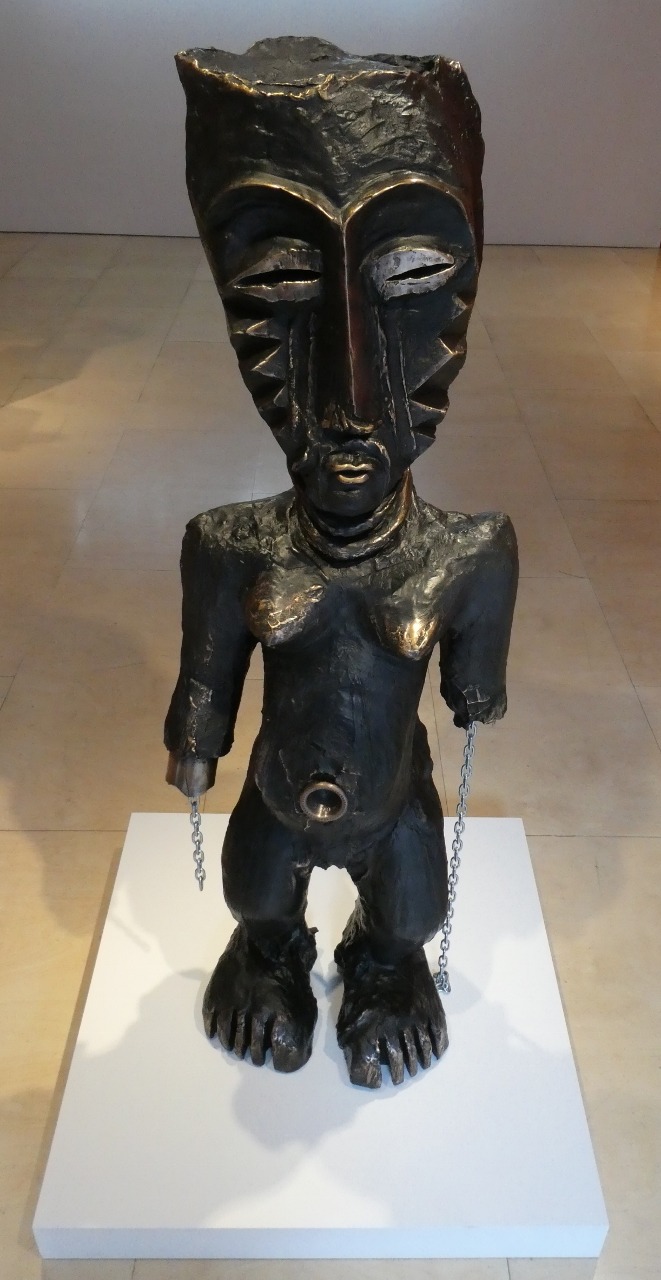Felix Gonzaleztorres Untitled Loverboy Postwar 1945 Present Blue Paper Endless Copies
Forever Art Mooching
Some of the Fab art I've seen in Mayfair galleries these last couple of weeks:

James Turrell
At Pace Gallery until March 27 2020
From the PRESS RELEASE: James Turrell's recent Constellation works, the focal point of this exhibition, are the culmination of Turrell's lifelong pursuit. Generating what the artist has called "spaces within space," these luminous portals are instruments for altering our perception; gazing into them results in the slow dissolution of the boundaries of the surrounding room, enveloping the viewer in the radiance of pure color. Fusing the temporal, sensuous, and illusory qualities of his projection works and architectural installations, the Constellations synthesize several aspects of Turrell's practice. Unlike his early projection pieces, however, they are not about generating an illusion; instead, they greet the viewer with the actual materiality of light, what Turrell calls "the physical manifestation of light, which we have trained our eyes too readily to look through rather than to look at."






Monochrome 2
At Ordovas Gallery until 25 April 2020

Dan Flavin's Untitled (for Charlotte and Jim Brooks) 4 (1964)
From THE PRESS RELEASE:Monochrome No.2 focuses on a selection of blue works by nine contemporary European and American artists as they contemplate the colour's complex associations and aesthetic possibilities through a variety of media. The myriad hues that make up this enigmatic colour evoke the elemental as well as the emotional, tint our memories, and are apt, according to Goethe, 'to disturb rather than enliven'. From an intimate blue ballpoint pen drawing made by Jackson Pollock in the late 1930s to a specially commissioned neon work by Joseph Kosuth, the exhibition touches upon the depth and diversity of blue, prized throughout the ages as the rarest and most mysterious of colours.

Joseph Kosuth - Nineteen Eighty-four(Orwell) #4 (2019)

Jackson Pollock - Untitled Pen, blue ink and brown crayon on paper c1939-42

Installation shot

Installation shot showing Roy Lichtenstein Seductive Girl (study) 1996
Yves Klein - La Marseillaise (ANT138) 1960
Cy Twombly - Untitled sculpture 2005
Felix Gonzalez-Torres - Untitled (loverboy) Blue paper, endless supply 1990
Heaven And Hell Are Just One Breath Away
Andy Warhol at S2 until 28 February

1985-86
From THE PRESS RELEASE: S|2 London presents a spotlight on the last cycle of paintings by Andy Warhol. Warhol was raised in a devout Byzantine Catholic household in Pittsburgh and was found to have retained a personal commitment to his faith throughout his life. Alongside his interest in consumer culture and celebrity, Warhol also explored religion and mortality within his practice, particularly towards the end of his career. The exhibition at S|2 will include works from this late period, including examples from Warhol's 1986 Last Supper series, his iconographic crosses and skull, as well as his appropriations of religious pamphlets and slogans such as the prophetic Heaven and Hell Are Just One Breath Away! that became one of his final works.

Crosses 1982

The last supper 1985-86

The Last Supper 1986

1985-86

Christ $9.98 (Positive) 1985-86

Skull 1976
A line Can Go Anywhere
Ruth Asawa at David Zwirner to 22 February 2020

From THE PRESS RELEASE: This will be the first major presentation of the artist's work outside of the United States and will include a number of her key forms, focusing in particular on the relationship between her wire sculptures and wide-ranging body of works on paper.
An influential artist, devoted activist, and tireless advocate for arts education, Asawa is best known for her extensive body of hanging wire sculptures. These intricate, dynamic, and sinuous works, begun in the late 1940s, continue to challenge conventional notions of sculpture through their emphasis on lightness and transparency. Relentlessly experimental across a range of mediums, Asawa also produced numerous drawings and prints that, like her wire sculptures, are built on simple, repeated gestures that accumulate into complex compositions. Although she moved between abstract and figurative registers in her sculptures and drawings, respectively, viewed together, the works in this exhibition nevertheless incite a rich dialogue and find commonality in their sustained emphasis on the natural world and its forms, as well as in their deft use of the basic aesthetic concept of the line. As she noted, "I was interested in it because of the economy of a line, making something in space, enclosing it without blocking it out. It's still transparent. I realized that if I was going to make these forms, which interlock and interweave, it can only be done with a line because a line can go anywhere."1
Born in rural California, Asawa was first exposed to professional artists while her family and other Japanese Americans were detained at Santa Anita, California, in 1942. Following her release from an internment camp in Rohwer, Arkansas, eighteen months later, she enrolled in 1943 in Milwaukee State Teachers College. Unable to receive her degree due to continued hostility against Japanese Americans, Asawa left Milwaukee in 1946 to study at Black Mountain College in North Carolina, then known for its progressive pedagogical methods and avant-garde aesthetic environment. Asawa's time at Black Mountain proved formative in her development as an artist, and she was particularly influenced by her teachers Josef Albers, Buckminster Fuller, and the mathematician Max Dehn. She also met architectural student Albert Lanier, whom she would marry in 1949 and with whom she would raise a large family and build a career in San Francisco. Asawa continued to produce art steadily over the course of more than a half century, creating a cohesive body of sculptures and works on paper that, in their innovative use of material and form, deftly synthesizes a wide range of aesthetic preoccupations at the heart of twentieth-century abstraction.













Work on paper at The Black Mountain College using BMC laundry stamp

detail
"It doesn't bother me. Whether it's a craft or whether it's art. That is a definition that people put on things. And what I like is the material is irrelevant. It's just that that happens to be material that I use. And I think that is important. That you take an ordinary material like wire and… you give it a new definition. That's all." —Ruth Asawa 2002
After Sight
Benode Behari Mukherjee
at David Zwirner until 22 February 2020

From THE PRESS RELEASE: The first solo presentation in Europe devoted to Mukherjee, the exhibition will focus on the artist's collages from the late 1950s and 1960s, after he lost his sight.
A pioneering Indian modernist, Mukherjee blended imagery and iconography from Indian life with a signature visual style influenced by Indian, East Asian, and Western art practices and traditions. Mukherjee studied with the celebrated artist Nandalal Bose as one of the first students at the renowned Kala Bhavana, the fine-arts institute founded by the poet Rabindranath Tagore at Visva-Bharati University in Santiniketan, West Bengal. The curriculum of Kala Bhavana was structured similarly to that of the German Bauhaus (Tagore travelled to Europe often, and he visited the Weimar Bauhaus in 1921), with students encouraged to explore form and style in an open manner with various mentors. Rather than depicting mythological or nationalistic imagery, common themes and subjects among Indian artists at this time, Mukherjee examined nature and his immediate surroundings. He created works in a variety of media, from graphite drawings to wall frescoes, all of which exhibit a deeply modernist yet highly individualistic and contextually specific sensibility towards form, color, and composition. As art historian Juliet Reynolds writes: '[Mukherjee's] attempt… was to reconcile Indian folk and classical art with far-eastern calligraphic painting, European early-Renaissance conventions and modern idioms.'

Cat 1965



To Exalt the Empheral
Alina Szapocznikow, 1962 – 1972
at Hauser & Wirth to 2 May 2020

From THE PRESS RELEASE: In a brief but explosively inventive career, Alina Szapocznikow (1926 – 1973) radically re-conceptualised sculpture as a vehicle for exploring, liberating and declaring bodily experience. 'To Exalt the Ephemeral: Alina Szapocznikow, 1962 – 1972,' reveals the full expressive potential of this pioneering Polish artist's work through the material innovations she made during the last decade of her life and is the first solo presentation of Szapocznikow's work in the UK since her acclaimed exhibition at The Hepworth Wakefield in 2017.
The details of Szapocznikow's biography have been well documented and readings of her work have often emphasised her experiences. Born in Poland to a Jewish family in 1926, she survived the horrors of concentration camps as a teenager. In the post-war years, moving from Prague to Paris, she ultimately abandoned the Socialist Realism endorsed by the Polish government, as well as the prevailing winds of modernist abstraction, to embrace Surrealist tendencies and the Pop-influenced New Realism of the Paris avant-garde, championed by Pierre Restany. Working furiously as she cycled through phases of artistic growth, Szapocznikow engaged themes related to the body with full intensity. In the last decade of her life, her experimentation with new materials acquired particular focus and force, yielding works that dramatically challenged the traditional language of sculpture and presaged approaches central to art today. Her work and life were cut short in 1973 when, at the age of 46, she succumbed to cancer.
'To Exalt the Ephemeral' begins with one of Szapocznikow's pivotal works, made in 1962. 'Noga (Leg),' a plaster cast of the artist's right leg, marks her shift away from the mere representation of the human body to a tangible imprint of her own personhood. Here, a single limb, detached from the larger structure that has defined it, becomes a symbol of individuation and a vehicle of pleasure, while nodding to the mechanical forces that commodify the female body.
Building on the idea of reproduction, Szapocznikow experimented with new industrial materials, including polyester resin and poured polyurethane foam. As the artist explained, 'Plastic materials seem perfect to me for attempts to express and capture our age because of their repetitive possibilities, their lightness, their colours, their transparency, their inexpensiveness. The age of modular multiplication, of swift mass consumption, of automatic repetition. These symptoms that are so characteristic, so superficially gay and so sadly monotone and moving. I hope to be able to explore deeply the problem of the repeated module, in direct contact with the module's industrial reproduction.'
Themes of mortality and violence have been a point of focus in the reception of the work, yet Szapocznikow equally mined the erotic and the absurd as terrains of investigation.

Through her material experiments, Szapocznikow generated a series of lamps, exemplified here by the 'Lampe Bouche (Illuminated Lips)' (1966) works, functional sculptures of glowing female lips extending from elongated stem-like bases. 'Sculpture Lampe (Sculpture Lampe)' (1970) combines a phallus-like form with a breast, the fragmented and juxtaposed body parts implying fetish objects. Although the artist lived and worked in Paris at the time, her focus on malleable material as a proxy for the body firmly positions her among contemporaries practicing in the United States, including Eva Hesse, Hannah Wilke, and Lynda Benglis, as well as noted friend Louise Bourgeois, to whom Szapocznikow dedicated and gifted two lamp sculptures similar to those on view.

Souvenirs (Polyester resin and photographs) 1967

Man with Instrument 1965
Window
Isa Genzken at Hauser & Wirth to 2 May 2020

From THE PRESS RELEASE: 'Window' is an exhibition at our London gallery by Isa Genzken featuring a new and unseen body of work. Genzken's immersive environment expands on the themes of travel, through elements of an aircraft cabin, and the window as a juncture between interior and exterior spaces. In this respect, it reveals the artist's interest in architecture and light, a topic of enduring resonance in her work as seen in the landmark exhibition in Chicago in 1992, 'Everybody Needs at Least One Window'.
Isa Genzken has long been considered one of Germany's most important and influential contemporary artists. Since the 1970s, Genzken's multifaceted practice has encompassed sculpture, photography, found-object installation, film, drawing and painting. Her work borrows from the aesthetics of Minimalism, punk culture and assemblage art to confront the conditions of human experience in contemporary society and the uneasy social climate of capitalism. Throughout her fifty-year career, Genzken's primary focus has always been sculpture, and although her style has remained varied, her work has maintained a striking common thread and internal truth to both her vision and to the works of art themselves.
Love, By Any Means Necessary
Kendell Greers at Stephen Friedman Gallery to 5 March 2020

From THE PRESS RELEASE: A solo exhibition of new works by South African artist and curator Kendell Geers who lives and works in Brussels.
The title of the exhibition derives from the protest movements of the 1960s and is inspired by a statement by Malcolm X about the use of violence in political liberation. At the centre of the exhibition is a large-scale black and white neon spelling out 'REVOLUTION' in reverse so that the hidden word 'LOVE' reads forwards. The artist explains, "In the wake of more than a century marked by affluence, we now stand at a dangerous crossroads… The Land Rights Claims in South Africa, the fence along the USA border, abortion rights in Alabama, the European refugee crisis, the 'gilets jaunes', Brexit and climate change are not separate problems, but all simply facets of one larger problem of disintegration, dissolution, alienation, denial, segmentation, prejudice and bigotry in the name of profit." In today's highly charged socio-political climate perhaps the most subversive act of all is to love. In the gallery window another neon spells out the letters FUC KING HELL. This play on words is characteristic of Geers' use of language in his practice. A wordsmith and a trickster, in this exhibition Geers aims to put love back into the revolution "by any means necessary".



Geers also draws inspiration from the contradictions inherent in his identity as an African artist. Describing himself as an 'AniMystikAKtivist', he weaves together diverse Afro-European traditions, including animism, alchemy, mysticism, ritual and a complex socio-political activism laced with humour and irony. A large bronze female figure stands like a sentinel in the gallery window. Her hands have been cut off and replaced with shards of glass. From each broken arm a chain dangles, resembling shackles from which she has liberated herself. A group of smaller bronze masks are influenced by Kota reliquaries, the first sub-Saharan African artworks to be exhibited in the West, examples of which were on display during Pablo Picasso's famous visit to Musée d'ethnographie du Trocadéro, Paris in 1907. In one of these works Geers has used a cast of his own mouth to close the mouth of the sculpture, bestowing it with "a kiss where art meets life".
Geers describes this exhibition as "a resurrection of spirit through an invocation of nature." A new series of paintings and works on paper, 'Les Fleurs du Mal', is titled after a volume of poetry by Charles Baudelaire. Charged with an intense longing and melancholia, these paintings depict cut flowers whose petals simultaneously take the form of bullet holes or wounds. Severed from their roots and invoking a memento mori, the beauty of these blossoms lies in their fragility. The repetition of an emblem in these works is also inspired by Dutch wax batik fabrics, whose brightly coloured patterns are a symbol of African identity yet are designed in Indonesia and produced in the Netherlands. The investigation of repetitive patterns is also found in the artist's wallpaper that covers the gallery wall and teases the viewer's peripheral vision.
Geers creates work that aims to disrupt commonly accepted moral codes and principles. At the 1993 Venice Biennale he officially changed his date of birth to May 1968, a momentous year in world history for human liberation and equality. Employing a wide range of references- from the realms of history of art, pornography, iconography and kitsch- his work reveals razor-sharp humour that plays with the viewer's repulsion and ridicules racial or religious stereotypes.
hastingsfuser2001.blogspot.com
Source: https://mrb33.tumblr.com/
0 Response to "Felix Gonzaleztorres Untitled Loverboy Postwar 1945 Present Blue Paper Endless Copies"
Post a Comment